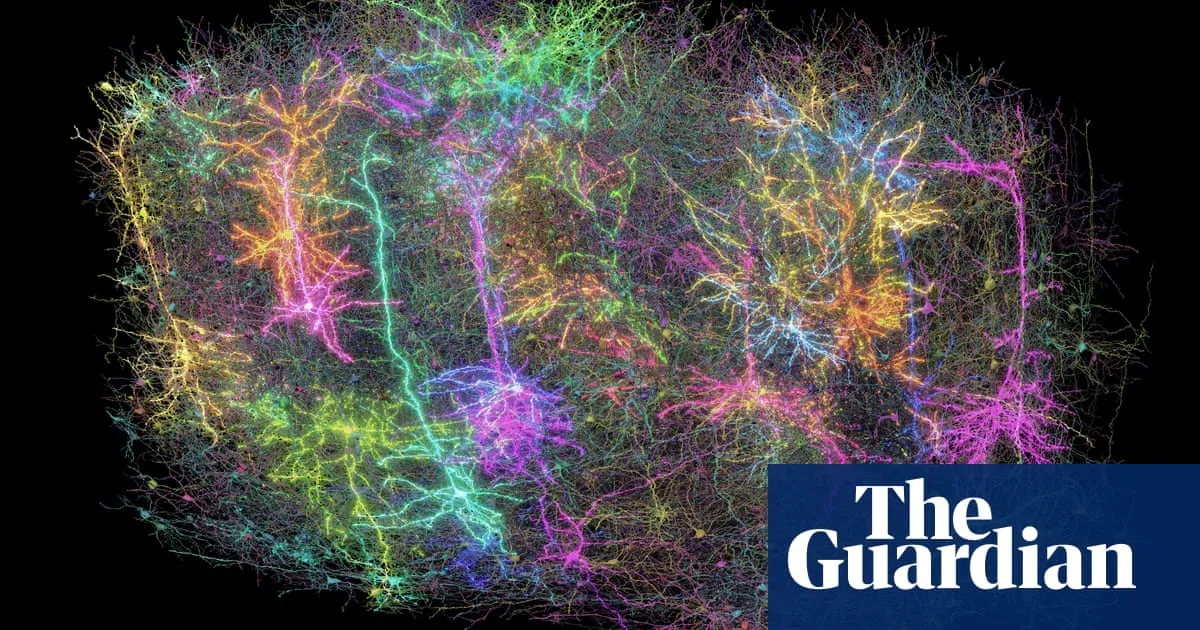
Scientists have achieved a remarkable milestone in neuroscience by creating the most comprehensive circuit diagram of neurons in a mammalian brain. This groundbreaking research provides significant insights into the intricate workings of the brain. The detailed map focuses on a minuscule portion of a mouse’s visual cortex, measuring smaller than a grain of sand. It meticulously traces the structure of 84,000 neurons interconnected by half a billion synapses and approximately 5.4 kilometers of neuronal wiring.
The 3D reconstruction of this cubic millimeter of brain tissue is pivotal in revealing the organization of the brain and illustrating how different types of cells collaborate. This research could have profound implications for understanding complex issues related to intelligence, consciousness, and various neuronal conditions such as Alzheimer’s, Parkinson’s, autism, and schizophrenia. Dr. David Markowitz, former programme manager at the US governmental organization Intelligence Advanced Research Projects Activity (IARPA), emphasized the significance of these advancements, stating that they mark “a watershed moment for neuroscience, comparable to the Human Genome Project in their transformative potential.”
The initiative known as the MICrONS project aimed not only to create a detailed map of neuronal structure but also to explore the electrical signaling between these neurons. This research sheds light on how neurons communicate, providing a clearer understanding of the hidden conversations occurring within the brain.
Scientists at Baylor College of Medicine in Texas began their research by employing specialized microscopes to record brain activity from the target region while the mouse observed various movies and YouTube clips. Following this, researchers at the Allen Institute sliced the cubic millimeter of brain tissue into over 25,000 layers, each only 1/400th the width of a human hair. An array of electron microscopes was then used to capture high-resolution images of each slice. Finally, a team at Princeton University utilized artificial intelligence and machine learning to reconstruct the neurons and their connections into a comprehensive 3D volume. The resulting dataset is an astonishing 1.6 petabytes in size, equivalent to 22 years of continuous HD video.
The findings from this extensive research have led to the identification of new cell types and a novel principle of inhibition within the brain. Previously, scientists viewed inhibitory cells—those that suppress neural activity—as a simple force that dampened the activity of other cells. However, this new study reveals that inhibitory cells are highly selective regarding which cells they target, establishing a network-wide system of coordination and cooperation.
By deepening our understanding of the brain’s form and function, this research could pave the way for enhanced comprehension of brain disorders characterized by disruptions in neural communication. Dr. Nuno da Costa, an associate investigator at the Allen Institute, likened this discovery to having a circuit diagram for a broken radio, stating, “If you have a broken radio and you have the circuit diagram, you’ll be in a better position to fix it.” He further elaborated that they are essentially creating a Google map or blueprint of this grain of sand, which can be utilized in the future to compare brain wiring in healthy mice to that of disease models.